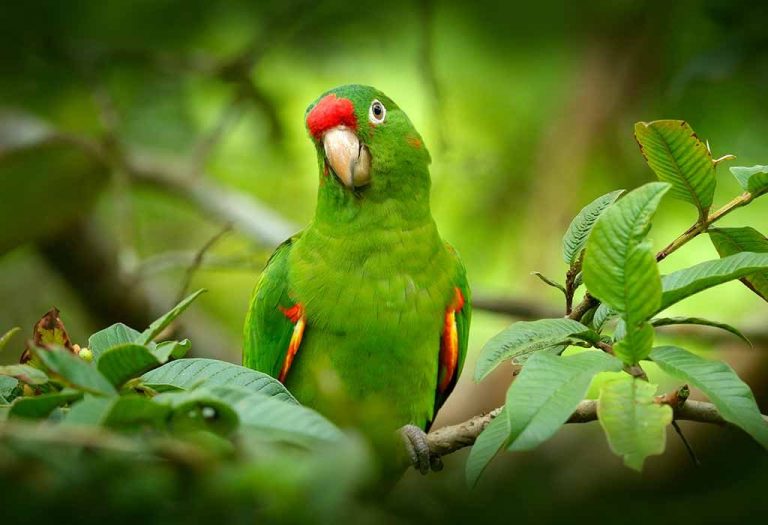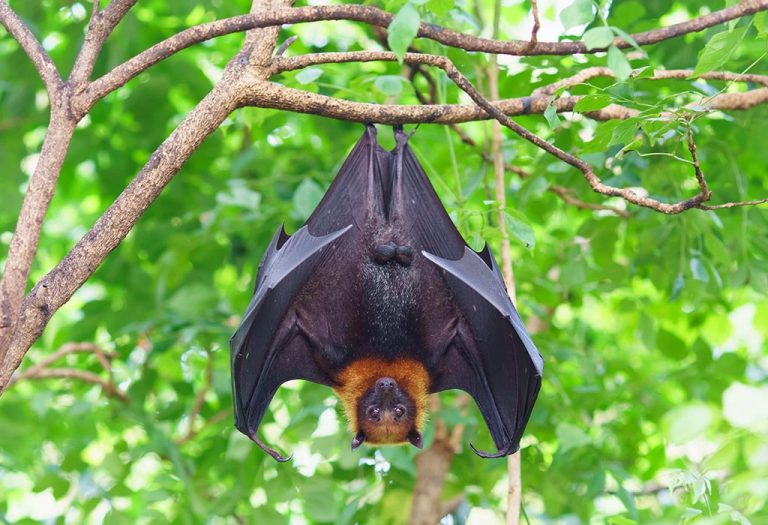Amazing Facts About Parrot for Kids
Parrots are fascinating birds that captivate people of all ages with their vibrant colours and playful personalities. Known for their ability to mimic human speech and sounds, parrots have a unique charm that makes them popular pets and beloved creatures in the animal kingdom. Apart from being beautiful with its bright-coloured feathers and beak, it is considered among the most intelligent birds. However, there are more amazing facts about a parrot than it being a bird with colourful plumes and its mimicry skills. So here is an article exploring some exciting and fun parrot facts for kids that will delight and educate them, sparking their curiosity about these amazing feathered friends.
Natural Habitation of Parrots
Parrots, a diverse group of birds, are predominantly found in the sub-tropics and tropical regions of the continents of Australia, South America, Africa, South and South-East Asia. Their presence is not limited to these areas, as we can also spot a significant number of parrot species in the Pacific islands, New Guinea and the Caribbean islands. The adaptability of these birds is further demonstrated by their presence in unexpected locations such as Belgium, Spain and the United Kingdom in Europe, the Tierra del Fuego archipelago in South America, Mexico in the southern tip of North America, New Zealand, Fiji and the Solomon Islands in Oceania, Philippines and Bahamas.
The parrot’s habitat is widespread. It lives in the lowlands of tropical forests and at the edges of streams and rivers. However, some species of parrots have been observed to be essentially forest dwellers. Some even live in shrubs and grasslands or dry forests.
Eating Habits of Parrots
The bird is mainly seen feasting on fruits, nuts, seeds, and buds. However, different species of parrots feed on different types of food. Birds like the cockatoo and African grey parrots eat mostly seeds and buds, while the golden-winged parakeets are predators and have been observed to feed on snails, insects, and sheep. On the other hand, a few varieties, like the hanging parrots, swift parrots, lories, and lorikeets, survive on nectar.
Nature of Parrots
Parrots, regardless of their variety, are inherently social creatures. They form flocks of 10-30 individuals, a behaviour that resonates with our understanding of social dynamics (2). Some parrot species even exhibit remarkable loyalty, maintaining the same mating partner throughout their lifetime.
Breeding Habits of Parrots
Parrots are mostly not territorial. They mostly build their nests in the tree branches using small pieces of wood, leaves, sticks, and twigs, or even in the tree cavities. A few varieties also build nests on the ground; some even make abandoned termite nests in their homes. The incubation period of parrots differs according to the size of the species; the larger the bird, the longer the time period of incubation. After the eggs hatch, the juveniles stay in the nest for a few weeks before they are big and strong enough to fly.
Other Facts About Parrots for Children
Parrots are full of surprises and fascinating characteristics, making them unique among birds. Here, we’ll uncover some lesser-known information about parrots for kids that will amaze them and deepen their appreciation for these extraordinary creatures. Listed below are some fun facts about parrots for kids.
- The best part about parrots is that they can mimic any sound. They can imitate anyone and anything and fool us!
- Parrots are brilliant birds. They don’t just imitate words or sounds by hearing them but can associate a situation or an object with the words and sounds. They are also adept in doing various tricks with and without objects, proving their intelligence level.
- The parrot has very strong legs, which allow them to swing on branches, cling onto something or even hang themselves upside-down. This is because they have four toes on each foot, known as zygodactyl feet. They even use their feet to pick up things or objects and eat with them (5).
- The lifespan of parrots varies according to the species. Small ones live for 15 – 20 years, medium-sized ones may have a life span of 30 years, whereas big ones like the blue and yellow Macaw can exceed a 100-year life span.
- The heaviest parrot species in the world is the kakapo. Owing to its heavy weight, which can be about 4 – 5 kilograms, it cannot fly. This parrot species is also the only one that is nocturnal, which means it moves around only at night.
- Parrot species from the South American continent have been observed to eat clay. They do so to flush out the toxins from their bodies, which are ingested into their system through the seeds they feed on.
- The ultraviolet light that is not visible to the human eye is quite easily visible to the parrot.
- Unlike other parrot species that live in warm regions, the kea is the only parrot variety that lives high up in alpine mountainous areas with low temperatures.
- The smallest parrot species is the Buff-faced Pygmy parrot, which weighs only about 10 grams and is 3 inches tall.
- The Hyacinth Macaw variety of parrots is the largest and can be about 1 m tall (3).
- Parrots have strong beaks that they use to crack open nuts and seeds, which are their favourite foods.
- There are around 393 different species of parrots worldwide, mostly in tropical and subtropical regions.
- Some parrots, like the African Grey, can learn and remember over 1,000 words.
- The Quaker Parrot, also known as the Monk Parakeet, is the only parrot species that builds nests out of twigs and sticks.
- Some parrot species, like the Amazon Parrot, are known for their ability to sing and dance to music.
- Parrots have a special, muscular tongue that helps them manipulate food and objects.
- The Rainbow Lorikeet has a specialised brush-tipped tongue to feed on nectar and pollen from flowers.
- Psittacofulvins are specialised pigments found only in parrot feathers, making their bright red, orange, and yellow colours unique to this bird family (4).
FAQs
1. Are parrots endangered?
Some parrot species are endangered due to habitat loss, poaching, and the pet trade. Conservation efforts are in place to help protect these beautiful birds and their natural habitats.
2. Do parrots need a lot of attention?
Yes, parrots are social animals that require much attention and interaction to stay happy and healthy. They can become lonely and develop behavioural problems if left alone for long periods (6).
3. What should you do if a parrot bites you?
If a parrot bites you, you should be aware of the risk of acquiring Psittacosis, also known as chlamydiosis or parrot fever. This infection can lead to symptoms such as atypical pneumonia, systemic malaise, and potentially severe complications like meningoencephalitis and myocarditis. To prevent infection, promptly clean the bite with soap and warm water, apply an antiseptic, and seek medical attention if the wound appears severe or shows signs of infection (1).
Whether soaring through tropical rainforests or brightening homes as pets, parrots continue to enchant and inspire curiosity. If you want information about parrot birds in English, this article provides detailed insights into their characteristics, behaviour, and habitats. Understanding and respecting these feathered wonders can ensure their conservation and enjoy their presence for generations. So, next time you hear a cheerful squawk or catch a glimpse of vibrant feathers, remember the incredible world of parrots that awaits exploration!
References/Resources:
1. King. I. C, Freeman. H, Wokes. J. E; Managing parrot bite injuries to the hand: not just another animal bite; PubMed Central; https://www.ncbi.nlm.nih.gov/pmc/articles/PMC4349841/#
2. Kelly. D, Rae. J, Menzel. K; The True Nature of Parrots; Avian Welfare Coalition; https://www.avianwelfare.org/issues/articles/truenature.htm#
3. Parrot; San Diego Zoo Wildlife Alliance; https://animals.sandiegozoo.org/animals/parrot
4. Burtt. E. H. Jr, Schroeder. M. R, Smith. L .A, et al.; Colourful parrot feathers resist bacterial degradation; PubMed Central; https://www.ncbi.nlm.nih.gov/pmc/articles/PMC3061162/
5. Interesting Facts About Parrots; https://www.parrots.org/kids/activities/Parrot%20Fact%20Sheet.pdf
6. Valla. D; 5 surprising facts about African grey parrots; World Animal Protection; https://www.worldanimalprotection.org.uk/latest/blogs/5-surprising-facts-african-grey-parrots/
Also Read:
Peacocks Facts for Kids
Interesting Penguin Facts for Children
Butterfly Facts and Information for Kids
Information & Facts About Ostrich for Children
Was This Article Helpful?
Parenting is a huge responsibility, for you as a caregiver, but also for us as a parenting content platform. We understand that and take our responsibility of creating credible content seriously. FirstCry Parenting articles are written and published only after extensive research using factually sound references to deliver quality content that is accurate, validated by experts, and completely reliable. To understand how we go about creating content that is credible, read our editorial policy here.






















